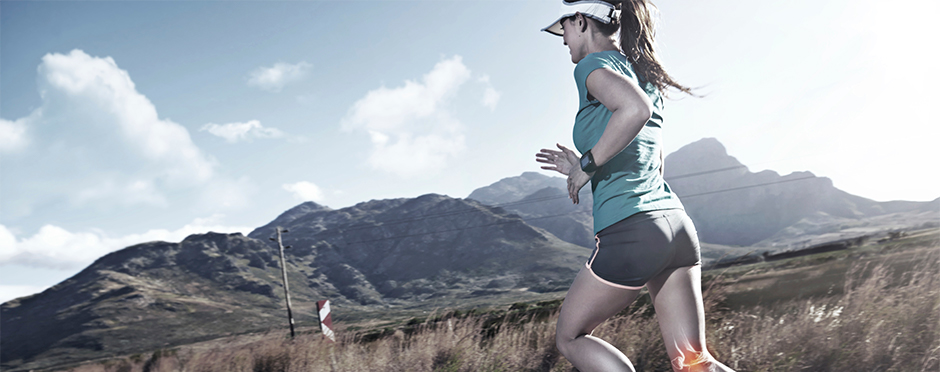
Running and Sweating and LEAKING…Oh My!
Leave a CommentAre you a female runner who has been preparing for a marathon? As you increase your mileage, you have likely experienced an increase in sweating. This is normal. However, if you have also experienced urinary leakage, this is NOT normal!
It is not uncommon for female runners to experience bladder leakage, which can be referred to as “Runner’s Leak.” Running is a high-impact sport that places increased stress to the pelvic floor muscles. Stress Urinary Incontinence (SUI) is urinary leakage that occurs with an increase in intra-abdominal pressure (IAP) such as a sneeze, cough, laugh, jump or run.4 As many as one in three females will experience SUI.2
Why do Runner’s Leaks happen?
Normally, the pelvic floor muscles should automatically engage before an activity that increases IAP. The coordination, timing and endurance of the pelvic floor muscles need to work synergistically with the entire Pelvic Core Neuromuscular System (PCNS). This includes the respiratory diaphragm, the abdominals and the back/hip muscles.
Many female runners will try to squeeze their gluteals and pelvic floor muscles (KEGEL- contracting your pelvic floor muscles) or hold their abdominals in tighter to stop the leaks. If you have tried one of these strategies, STOP! This does not make biomechanical sense and causes your PCNS to fatigue at a quicker rate, resulting in Runner’s Leaks.
Here are a few strategies to stop Runner’s Leaks:
1. Breathe deeply by drawing air into the lower parts of your lungs to expand your ribcage and activate your respiratory diaphragm. This will also activate your PCNS and oxygenate your body for better sports performance. Practice deep breathing throughout your day to pre-load the pelvic floor muscles, with 5-10 repetitions at a time.3
2. Normal bladder emptying should occur every 2-4 hours during the day. Normal bladder capacity is about 12-16 ounces.4 This will also be dependent on your fluid intake. Don’t hold your bladder too long, as this can cause a miscommunication between the brain and the bladder. Also, don’t empty your bladder too soon, as this can cause the bladder to be hyper-reactive. Both situations will negatively influence the timing and coordination of the entire PCNS.
 3. Perform a three-dimensional dynamic runner’s stretch. Position yourself into the runner’s calf stretch. Then move your body forward and backward into and out of the lunge position. Next, while in the lunge position, use total body motion to move your hips right and left, then clockwise and counter-clockwise. Perform 5-10 repetitions in each direction and on each side.1
3. Perform a three-dimensional dynamic runner’s stretch. Position yourself into the runner’s calf stretch. Then move your body forward and backward into and out of the lunge position. Next, while in the lunge position, use total body motion to move your hips right and left, then clockwise and counter-clockwise. Perform 5-10 repetitions in each direction and on each side.1
When running, the moment when your foot hits the ground, your gluteal/hip muscles should activate to absorb the impact through a chain reaction.1 This activates your pelvic floor muscles to maintain continence and supports your pelvic bowl organs (bladder, uterus and rectum). Proper female-specific training that includes dynamic three-dimensional mobility and stability exercises will help you avoid Runner’s Leaks.
If you currently are experiencing Runner’s Leaks, it is never too late to start training to address this type of pelvic floor dysfunction. A Physical Therapist who specializes in female health can help you achieve your goals. A total body evaluation will determine the best plan of care for your individual needs. The plan of care may include mobility exercises, bladder training, strengthening exercises (Pelvicore Program), dietary suggestions, pessary discussion, incontinence product education, a home exercise program and a review of all treatment options.
If you have questions about your bladder health, click the button below to take our Bladder Quiz and contact an Athletico Women’s Health Specialist to start your road to recovery.
The Athletico blog is an educational resource written by Athletico employees. Athletico bloggers are licensed professionals who abide by the code of ethics outlined by their respective professional associations. The content published in blog posts represents the opinion of the individual author based on their expertise and experience. The content provided in this blog is for informational purposes only, does not constitute medical advice and should not be relied on for making personal health decisions.
References:
1) Gray, G. The Gray Institute, Chain Reaction Mostability. 2007
2) Nygaard et al, UI in Elite Nulliparous Athletes, Obstet Gynecol 1994, Aug 84(2):183-7.
3) Croft, S. Pelvic Floor Essentials 2nd Edition 2015 National Library of Australia.
4) American Urogynecologic Society: 2016, Pelvic floor Dialogues. Accessed 2016. www.augs.org
